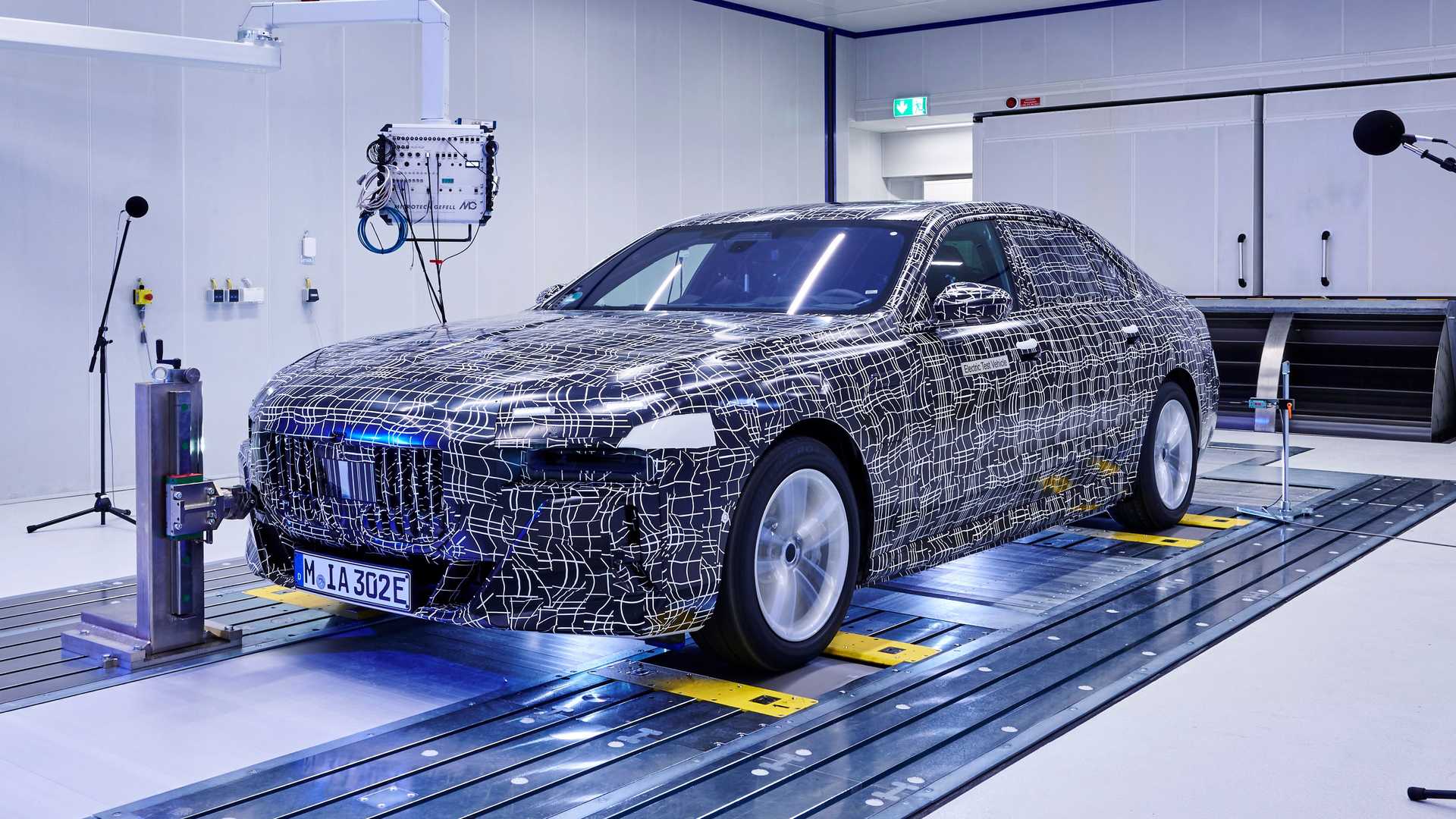How BMW optimises the acoustics in the upcoming i7 electric car
BMW says it is developing the i7 luxury electric car, which is due to be launched on the market later this year, with the aim of combining driving pleasure typical of the brand with a top-class comfort experience.
The acoustics are a central factor in this. The well-being in the interior of the purely electrically driven luxury saloon is to be decisively characterised by keeping disturbing noises away from the occupants. A multitude of possible noise sources has to be taken into account. The test programme that near-production prototypes of the i7 and all other model variants of the future 7 Series undergo as part of the acoustic testing is correspondingly extensive.
At the Munich Research and Innovation Centre (FIZ), the test and development engineers check all sound emissions and immissions of the vehicle. The drive and rolling noises as well as the aeroacoustics and vibration comfort is analysed in detail to record the acoustic properties of the new saloons in all their facets. This also includes the precise tuning of the acoustic pedestrian protection and the drive sound emitted in the interior of the BMW i7, which was developed as part of BMW IconicSounds Electric in a collaboration between the manufacturer and Hollywood film music composer Hans Zimmer.
In the new acoustic test benches in the new FIZ Project House North, which are specially designed to meet the requirements of electromobility, all driving situations can be reproduced realistically. Disturbing noises that the trained ears of the development engineers notice during test drives on the road can be recreated there and specifically eliminated. Roller dynamometers with a unique quiet level and exchangeable pads enable the measurement and validation of drive acoustics as well as rolling noises on all road surfaces relevant to everyday traffic worldwide, BMW said in a recent statement.
The claim for the i7 is to also meet the high standards of the luxury segment in terms of acoustic comfort. According to BMW, particular emphasis was placed on the silent power delivery of the electric drive. The acoustic optimisation of the electric drive units, the model-specific mounting concept and a newly developed noise encapsulation for the electric motors should contribute to this. The sum of these measures is intended to help the BMW i7 achieve sound decoupling that is effective over a wide frequency range and is intended to ensure maximum acoustic comfort in the interior in all driving situations. The driver of the purely electric luxury saloon always has the choice of enjoying either the characteristic silence of the drive or the BMW IconicSounds Electric from the cooperation with Hans Zimmer.
Increased body rigidity in the front section and tyres with a foam absorber inside for integrated noise insulation is also intended to raise the acoustic and vibration comfort of the new luxury sedans to an optimised level.
Acoustic testing in the climate test rig and the wind tunnel.
To be able to test the effectiveness of all measures even under extreme climatic conditions, the development engineers in the FIZ Project House North use the specially designed acoustic climate test stand. Here, all globally relevant conditions can be simulated and, especially at very low or high temperatures, a wide variety of noise sources such as the acoustics of the air conditioning and ventilation system in the entire vehicle can be analysed and optimised.
Just like the drive and tyre rolling acoustics, the airflow noise can also be reduced in a targeted manner. The aeroacoustics of the i7 is therefore also perfected in the acoustic wind tunnel. The designed body surfaces, flush-integrated door handles and aerodynamically optimised exterior mirrors, as well as the almost completely closed underbody, are intended to contribute not only to the low air resistance of the luxury saloon but also to above-average acoustics.
Innovative materials for optimised noise insulation
In addition to the noises and vibrations emanating from the vehicle itself, it is above all noise sources from outside that impair the comfort experience while driving. In the new acoustic simulator at FIZ Nord, the noise emissions that emanate in everyday traffic, for example from road construction sites or passing trucks, can be simulated under laboratory conditions. There, the vehicle prototypes are exposed to sound from all directions with a multitude of loudspeakers to test the effectiveness of the interior noise insulation.
